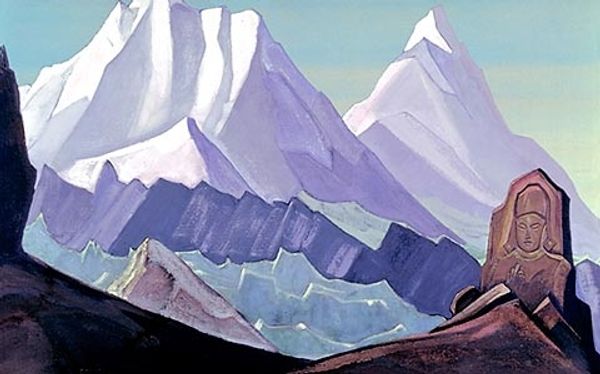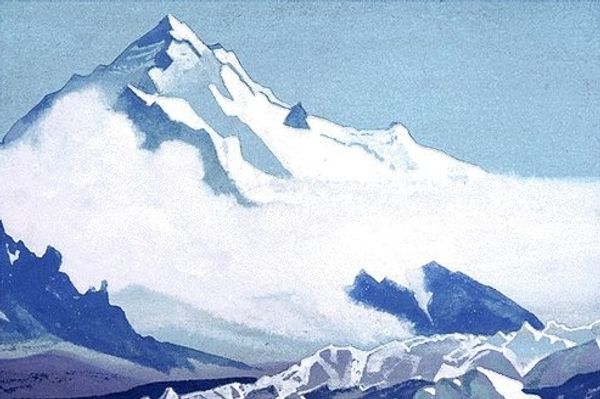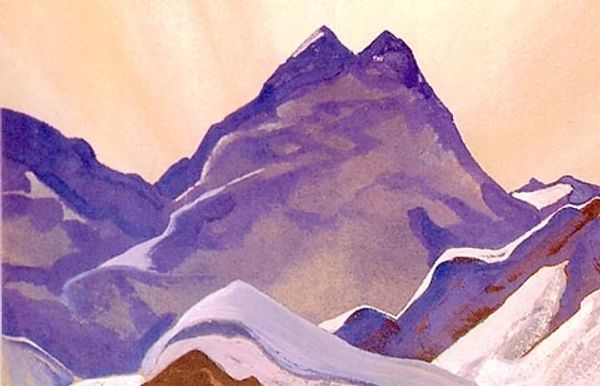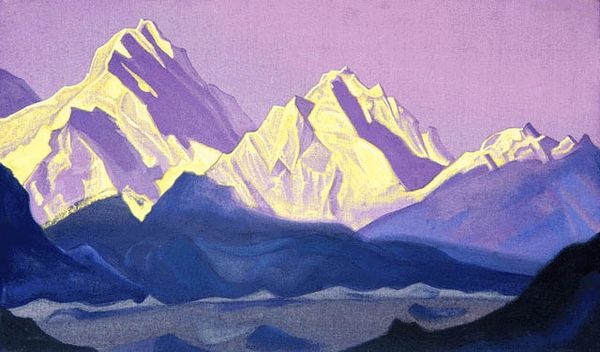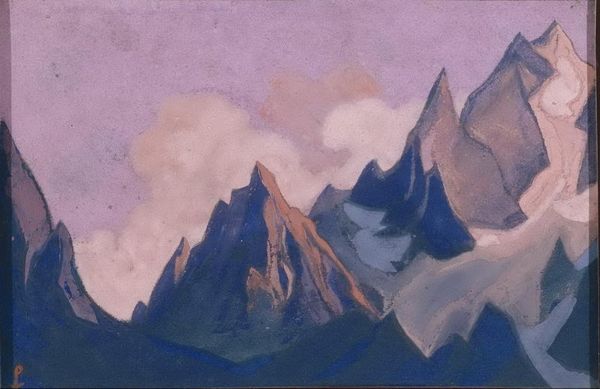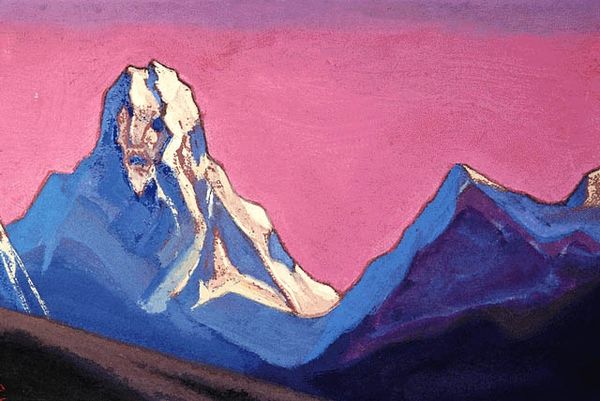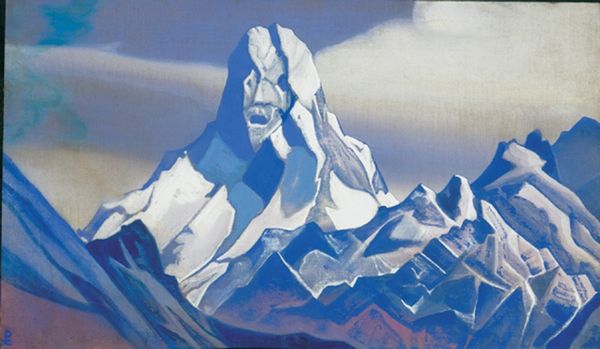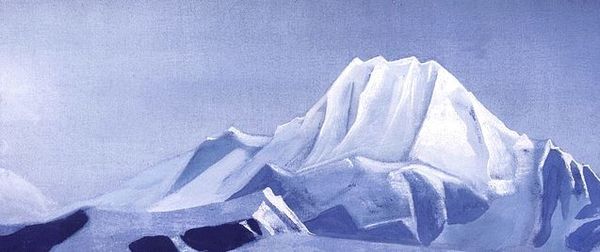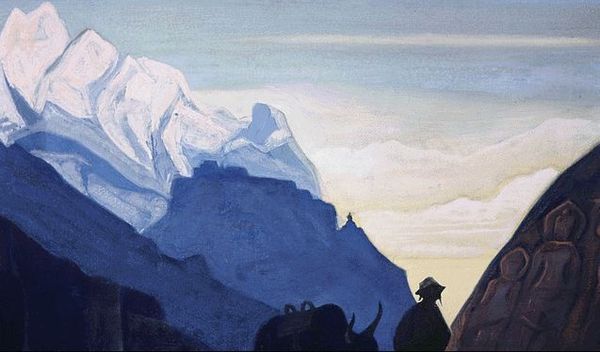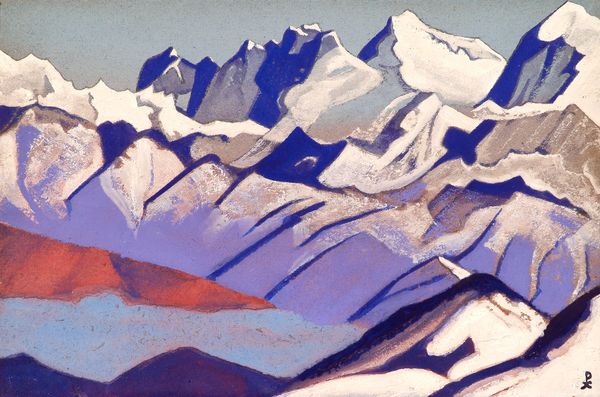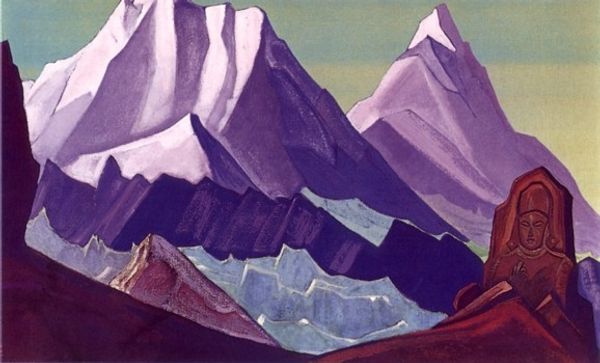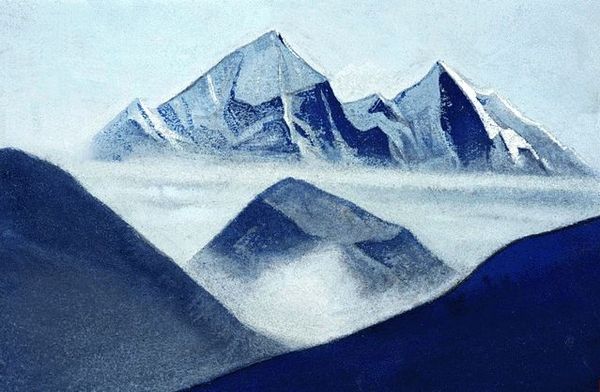
Copyright: Public domain
Curator: Looking at this painting, I’m immediately struck by the imposing solidity of the dark mountain dominating the foreground. Editor: Indeed. What we have here is Nicholas Roerich’s "Maitreya," painted in 1933. Roerich was deeply influenced by Asian cultures and philosophy; we should understand this piece in the context of his spiritual quest. Curator: Well, the tempera medium, coupled with what appears to be a fresco-like texture, definitely gives it an archaic, almost mural-esque quality. And this limited, almost monochromatic palette of blues and purples reinforces that feeling. Editor: Roerich was fascinated by symbolism, so consider the titular Maitreya—the future Buddha—and the ancient prophecies surrounding his arrival, promising renewal. He links that anticipation to landscape painting and social progress. Roerich's engagement with theosophy also positioned him to consider the East as a site of esoteric wisdom and the key to humanity's further growth. Curator: It is interesting how he’s integrated these almost ghostly figures into the mountainside; it’s as if the landscape itself embodies this sense of anticipation. They almost feel carved into the stone like ancient petroglyphs. I wonder if he intends for this merging to be symbolic too? Editor: Absolutely. And think about the artistic and political milieu. Roerich sought to construct this utopian vision that would synthesize culture, nature, and the shared wisdom of the East. In "Maitreya" there is a conscious projection of these ideals into the painting of the Asian landscape. Curator: I also see, particularly toward the upper half, this movement implied by the receding peaks, that gives this an ethereal, almost dream-like quality. Very cool color tonality as well. Editor: It makes me wonder, what exactly he imagined to be in store for Russia and the world beyond when gazing upon the Asian horizon? Curator: Contemplating it from a purely compositional stance, I'm truly drawn to his unique use of color and geometric forms. Editor: And from my view, it’s impossible to look past its intricate connection with the political and spiritual views of the era in which Roerich painted it.
Comments
No comments
Be the first to comment and join the conversation on the ultimate creative platform.
